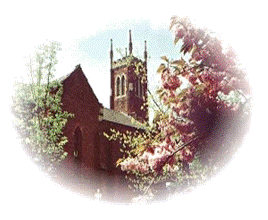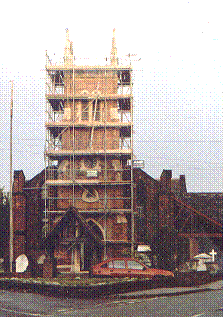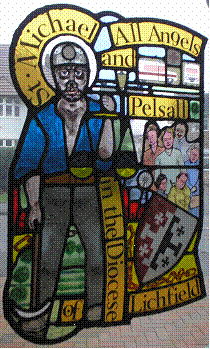St Michael & All Angels
Pelsall Parish Church
History
|
In 994 a Saxon Lady Wulfrun was endowing with land a Monastery at Hamtum, hence
Wolverhampton. This included most of Pelsall or Peolshale as it was then called.
In 1311 the Chapel known as St. Peter’s was in Paradise Lane. In this year a William de Keu endowed it with land for the maintenance of a Priest. There was no burial licence. In 1546 the Church in Paradise Lane was quoted as having its possessions as:- 5 oz of white plate worth £5-1s-0d 4 oz of partly gilt plate worth 3s-4d Two bells in the steeple Priest in charge had a salary of £4-3s-3d per year In 1762 the roof of the old Church in Paradise Lane collapsed. On 1st October 1763 a consecration ceremony took place dedicating the Church to St. Michael and All Angels. In 1843 the Revd William Jesse, Perpetual Curate of Pelsall and Thomas Charles and James Birch, Chapel wardens applied for a Faculty to take down the Chapel of Pelsall and build a new one on a site on Pelsall Common approved and donated by the Dean of Wolverhampton as Lord of The Deanery Manor and by the Marquis of Cleveland as lessee of the Deanery Manor. On 7th June the foundation stone of the new St. Michael’s Church in Hall Lane was laid. In 1844 the Church was erected being of plain brick fabric with a gallery but no tower. Until 1846 the Deans of Wolverhampton were Vicars of Pelsall. Pelsall was known as a 'Peculiar' which meant that it was an ecclesiastical district set apart from the normal jurisdiction of the Bishop. Its Curate reported to his superiors at Wolverhampton, not to Lichfield. This system was discontinued upon the death of Dean Hobart and Pelsall appointed a resident Vicar for the first time, the Revd. William Jesse. In the churchyard is the memorial to the Pelsall Hall Colliery pit disaster of 14th November 1872 in which 22 men lost their lives when the pit was flooded by a sudden rush of water. The funeral of the victims involved the whole of the village, a close community. Everyone had lost a friend or relative. During the rescue work the Bishop of Lichfield arrived and took the morning and evening services in the church on Sunday and also addressed workers and spectators on the pit bank. In 1889 St. Michael’s was extended and renovated at a cost of £1,050 as a memorial to Queen Victoria’s Jubilee. The Chancel was built of plain red brick with Hollington stone arches and windows, Altar rail and oak choir stalls. The new organ was built by Nicholson and Lord of Walsall. In 1890 two more stops were added to the organ. On 10th February 1985 the Church Centre was opened by the Bishop of Wolverhampton. In 1987 a new stained glass window was added to the entrance of the new extension. It depicts St. Michael as a miner (suitably haloed) holding a pair of scales, his traditional emblem. In 1990 Trees were planted in the Churchyard. In 1991 some renovation work was carried out to the brickwork of the tower and the Church was on television for the “Blind Date” wedding. In 1994 the village of Pelsall celebrated its Millennium and the present Church building was 150 years old. The four tapestries that hang in the church centre were made to celebrate Pelsall’s Millennium in 1994. In 2002 Pelsall became one of twelve “Rose Villages” in England, to mark the Golden Jubilee of Queen Elizabeth. There are 10 beds planted around the village. One of the beds was in front of the Church Centre which is planted with 30 ‘Remember Me’ roses. The church centre is used for meetings etc and when the heating broke down in 2007 was used for midweek services, 8-00am and 6-30pm services on Sunday, the main Sunday service being held in the Church Hall. |
Vicars For a List of all the past and present Vicars click here     |